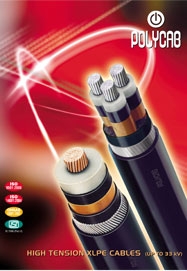All You Need To Know About MICC Power Cables and Electrical Wiring

The world of electrical cables is as massive as this universe, with every new variety emerging superior to its predecessor. Although, there are many kinds of power cables available in the market, only a few are well known among the masses. One such lesser known variety is the Mineral Insulated Copper Clad cables, better known as MICC cables. A variety of electrical cables commonly used in power and control circuits of pivotal equipments, MICC cables are constructed with copper conductors which is enveloped with a copper sheath. Also known as Pyro cables and MI cables, these cables are insulated by powdered inorganic magnesium oxide which provides them resistance against high temperatures.
MICC cables are extensively used in environments which are exposed to higher temperature and pressure. Due to its mineral insulation, these cables provide excellent fire resistance which enables them to be used as heating cables for industrial and domestic applications. While the commonly used variety of these cables have 7 conductors in them, the ones which cater to larger applications and equipments may use 19 individual conductors for greater resistance. Due to its effective insulated arrangement, these cables are used in nuclear reactors, fire alarm systems, tunnels, ovens, factories, industrial furnaces, emergency power and lightning systems, hospital operating systems, temperature measurement devices, transport hubs, residential buildings, and in public buildings like cinema theaters and hotels.
MICC cables last longer as compared to plastic insulated cables. The durability of MICC cables can be attributed to its sturdy construction. The robust sheath and the powdered mineral insulation of the cables act as the protective gear of the conductors, preventing them from getting in contact with exterior elements. The functioning of these power cables is not hampered even when exposed to harsh environments for a longer period of time. Though the cable is made of extra-strong materials, its flexible competence is not compromised. The cables can be wound or bent as per the requirements without affecting its functioning. While renovating old mansions and heritage buildings, MICC cables are often the first choice of engineers as they blend easily with the stone work used.
Although MICC cables can handle high pressure, they are not suitable for applications which are subject to vibrations. Using the cables in equipments that vibrate or contract damages the exterior of the cables and its core; thus, affecting the performance of the cables and leading to failure in the operation. Moreover, these cables are manufactured with ratings up to 1000 volts only. This means MICC power cables cannot transmit electricity beyond 1000 volts. While these cables do not get corroded easily, a hole in the copper sheath or contact with ammonia-bearing compounds can easily accelerate moisture absorption, ultimately leading to corrosion and circuit failure. MICC cables have its own set of advantages and disadvantages. Hence, its always vital to analyze them before using them for various applications.
Ashish Poly has extensive knowledge in the field of house wiring. He writes articles on various cables and wires which can be used for industrial and domestic purposes.
